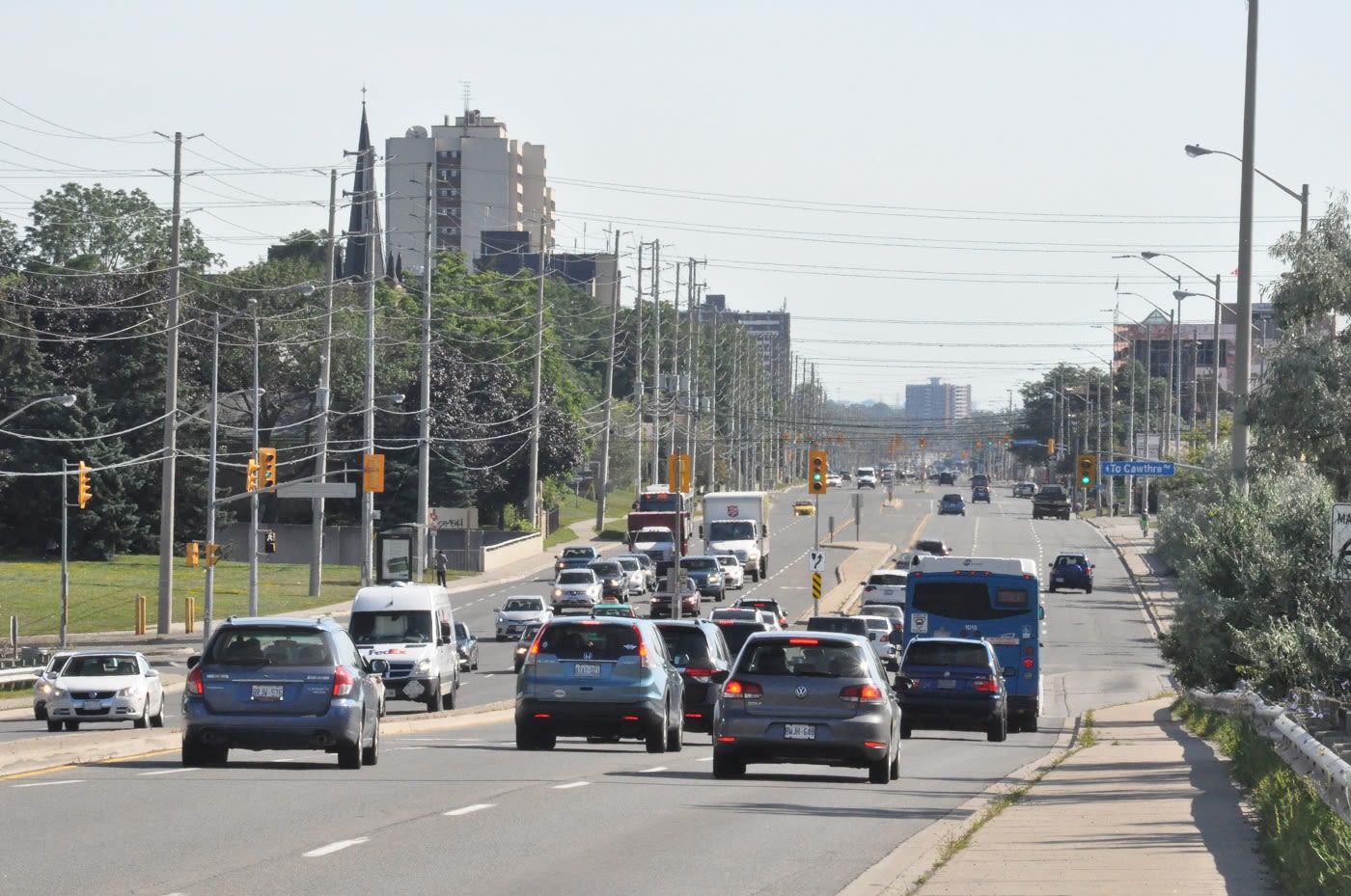
Dundas BRT
- Projects & Programs
- Dundas BRT
- Get Involved
The need for Dundas Bus Rapid Transit
Previous municipal planning studies and the Metrolinx Initial Business Case confirmed the need for improved bus transit infrastructure along Dundas Street. Metrolinx is now advancing plans for the Dundas Bus Rapid Transit (BRT) corridor. The purpose of the Dundas BRT project is to evaluate the proposed transit corridor along a 48 kilometre stretch of Dundas Street from Highway 6 in the City of Hamilton through to the Kipling Transit Hub in the City of Toronto, linking Etobicoke and Mississauga City Centres. More than 20 kilometres, of the 48 kilometre BRT, will operate in bus lanes or in a dedicated right-of-way, separate from other traffic, allowing faster and more reliable transit connections.
The Dundas BRT is part of a bigger picture for an integrated, multi-modal regional transportation system that will serve the needs of residents, businesses and institutions. It supports Ontario’s Growth Plan for the Greater Golden Horseshoe, 2017, which sets out a broad vision for where and how our region will grow and identifies policies on transportation planning in the GTHA.
Dundas BRT alignment
48 kilometres of BRT
Get engaged
We have a dedicated Community Relations team for each region available to answer your questions at any time.
Metrolinx is committed to maintaining the accuracy, security and privacy of the personal information we collect and use, in accordance with the Freedom of Information and Protection of Privacy Act. All personal information included in a submission – such as name, address, telephone number and property location – is collected, maintained and disclosed by Metrolinx for the purpose of transparency and consultation. Personal information you submit will become part of a public record that is available to the general public unless you request that your personal information remain confidential.
For more information, please visit contact us page.
In addition to virtual public engagements, the project team is engaging with public, stakeholders and subject matter experts through a Technical Advisory Committee (TAC) and Stakeholder Advisory Groups (SAGs). Metrolinx will continue to work with the TAC and SAGs throughout the course of the project to help ensure community members along the Dundas BRT corridor remain engaged and informed.
TAC Meetings:
- Provide stakeholders and technical experts with the opportunity to learn about and provide input into the project to inform key decision-making.
- Allow members to address issues and provide advice on the development of the project.
- Offer the project team a fresh perspective.
SAG Meetings:
- Provide community leaders, advocates and experts within each section of the corridor the opportunity to learn about and provide input into the study.
- Allow members to learn about the project, ask questions of subject matter experts within the project team and discuss the project and potential impacts with other community leaders.
Watch a recording of the live update and Q&A session for the Dundas BRT Project held on January 27, 2022.